Saintpaulia is one of the most beautiful domestic flowers, has several tens of thousands of varieties. However, planting and caring for violets at home requires a lot of strength, since the plant is very moody.
Wanting to see bright fresh flowers on the windowsill, the hostess must understand that watering them once a week will not be enough. But for the sake of the result, it’s still worth the work.
Material Content:
Basic requirements for growing violets
In order not to begin the withering of the petals, rotting of the roots or the appearance of pests on the plant, you should adhere to certain principles for caring for it. Bright flowers require a suitable location and humidity, it is also necessary to properly water and fertilize.
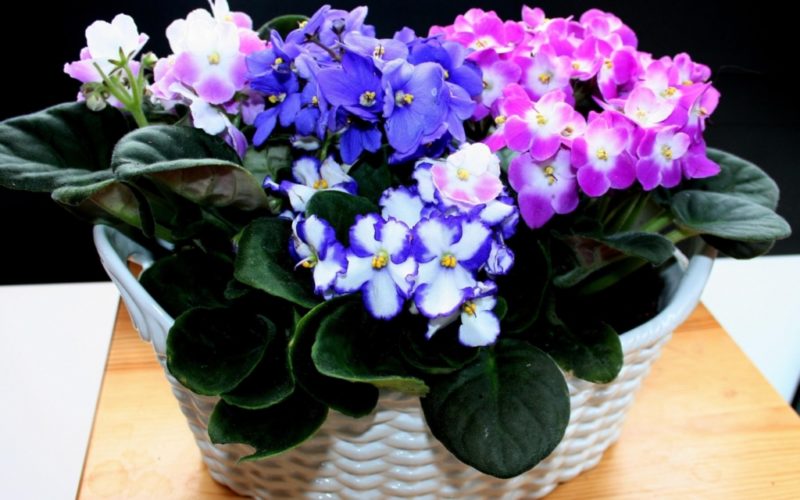
Rules that help grow beautiful violets:
- Every couple of years, the plant should be replanted, as the flowers become smaller, and the leaves grow greatly. Therefore, without a transplant, it loses its attractive appearance.
- To give shape, you need to carefully trim the lower leaves. So the senpolia will grow in a neat hat.
- The bright color of the buds can be obtained by periodically watering the home flower with a weak solution of potassium permanganate. This step will also protect the soil from pests. However, care must be taken to prevent fluid from entering the leaves.
- Turn the pot regularly so that the violet assumes the correct round shape.
Read also: How to care for violets?
Compliance with these simple recommendations will give a neat appearance to the plant, but this is not enough. A lot depends on regular care of him.
Home Care
Caring for violets is a rather painstaking job, which should be permanent. The hostess needs to monitor the optimization of soil moisture, and also whether there are enough light and fertilizer senpolia.
For this plant, you should choose the optimal location so that it feels comfortable. Then the result in the form of beautiful, neat flowers will not keep you waiting.
Ground and pot requirements
Initially, you need to choose the right pot for planting violets. At the first stage, for cultivation, you should take a container with a diameter of about 6 cm. This will be enough for the senpolia to assimilate and take root.
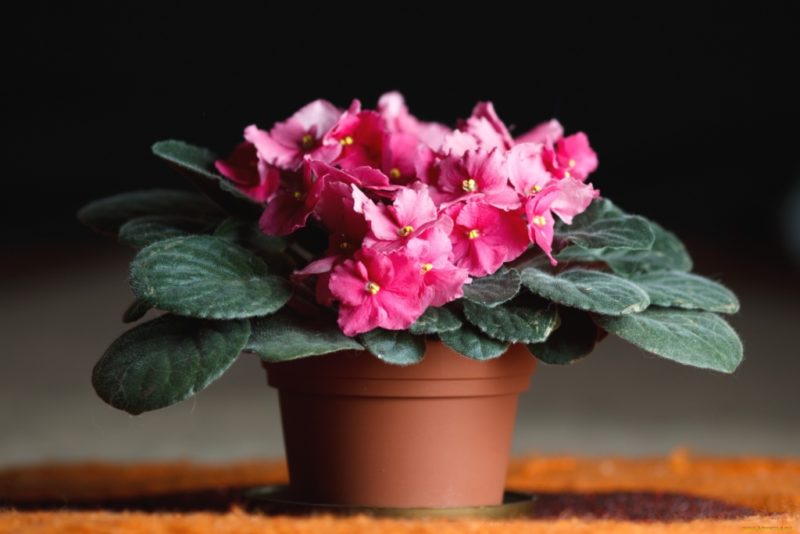
For an adult plant, the optimal pot size is about 10 cm in height and around. It does not matter if the capacity is plastic or ceramic, but it definitely should not be large.
This stage is very important, since the violet blooms only after the pot is completely filled with the root system.
Soil can be purchased ready-made, which is specifically designed for the senpolia. To make the mixture yourself, you should work harder, while the earth will also be suitable.
What is needed for soil formation:
- drainage (small stones, broken brick or charcoal);
- turf (topsoil, preferably from the forest);
- sand;
- humus;
- white moss (sphagnum).
The optimal soil, which is close in composition to that recommended for violets, is forest, but unlike store soil, it is dangerous by the presence of pests. The mixture should be loose, conduct air and water well. About 30% of the pot is drained, the rest is soil.
Watering, fertilizing and fertilizing a flower
The main stage that helps to grow a healthy plant is its proper watering. Violet can not be poured, otherwise her roots quickly decay and she dies.
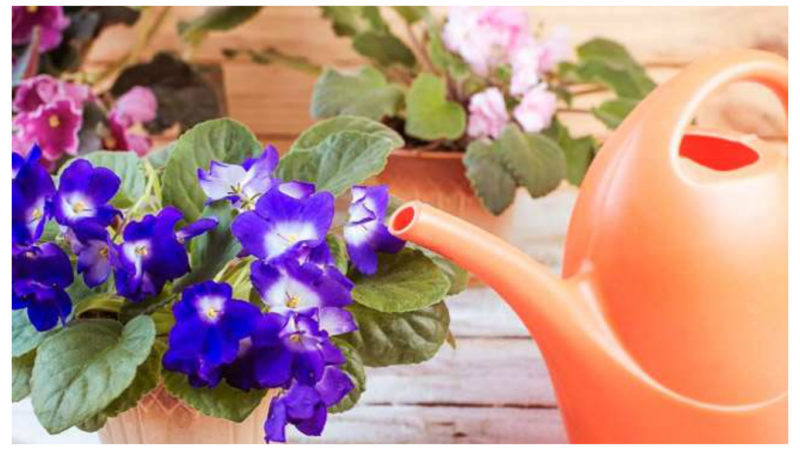
In the summer, when the air temperature is about 25 degrees, senpolis are watered every day, but very little. In winter, with a room temperature of 18-20 degrees, you need to reduce watering to 2 times a week.
Water should be defended, the liquid should be at room temperature. You can also take melt or rain water.
If watering violets through the soil, moisture must be avoided on the leaves. Residues can be removed from the plant with a napkin. This is necessary so that there is no burn on the spot of drops from sunlight. If watering through a pan, the remaining fluid from it must be removed after half an hour.
Saintpaulia needs to be fed only a few months after planting, since at first there are enough nutrients in the ground.
To fertilize the plant, half an hour should be watered. This will protect the roots from burns. The easiest way is to buy a ready-made concentrate that contains nitrogen, phosphorus and potassium, as well as sulfur, calcium and iron in small quantities.
When you can not feed violet:
- the first 2 months after planting in a new pot;
- the presence of disease;
- pests on flower leaves;
- improper air temperature;
- in the morning before a sunny day.
Senpolia must be fed carefully, without getting the mixture on the leaves. You can also choose top dressing through the pan, then it is carried out in the same way as watering - after half an hour you need to remove all excess moisture.
Location, lighting and humidity
The optimal location for the violet will be the windowsill, which does not get direct sunlight. However, the plant is photophilous, so even in winter, the hostess must take care of a sufficient amount of lighting.

Violets look beautiful and effective on glass shelves with built-in fluorescent lamps, as ordinary ones will burn leaves.
From Saintpaulia you can make a gorgeous piece of furniture, even when the sun is not enough. If artificial lamps are used, you can choose any location for violets.The light period at any time of the year should be at least 10 hours. Suitable air humidity is 50-60%.
Features of propagation of violets
Uzambara violet can propagate in several ways. Each of them is suitable for different occasions. The first flowering of the plant should be expected a year after planting.
Breeding options:
- Sheet. It is necessary to cut the sheet with scissors, which must first be sanitized. The cut is carried out diagonally, after which the sheet is lowered into the standing water. After a while, the first roots will appear. When the roots reach 4 cm or more, the plant can be planted in the ground.
- Peduncles, stepsons. The method is suitable for preserving a certain variety, as it helps to leave the plant with the quality of a mother flower. To do this, it is necessary to carefully separate the violet baby from the main part and immediately plant it in the ground.
- The seeds. This method is the longest. Initially, you need to moisten the seeds, then mix them with coal, then with sand. Subsequently, they are sown.
The most commonly used propagation of violets is using the leaf method, since it does not require special skills. And with proper care, the plant always blooms and pleases the hostess.
Transplant at home
Senpolia transplantation should also be done carefully. Initially, you need to remove the plant from the pot, trying not to damage the shape of the rhizome. After this, the roots should be examined. They should be white, fill the entire container. This indicates the health of the flower, then the transplant is not difficult.
Darkened roots, which are often brown, should be carefully removed. Then it is recommended to rinse the rhizome and lower it for a while in a container with crushed activated carbon. This method will dry the roots. After all the manipulations done, you can plant a violet in the prepared soil.
It is interesting:violets
Household pests and diseases
Indoor violet is very moody about leaving, and if there are pests or diseases on it, it completely stops blooming and eventually dies. However, the positive thing is that this plant is very rarely ill.
The most dangerous diseases for senpolia:
Root nematode.

It is transmitted through street soil or from other indoor plants. Pests hit the roots, after which the flower quickly dies. Prevention is the purchase of soil from a store that is sterile.
Late blight.
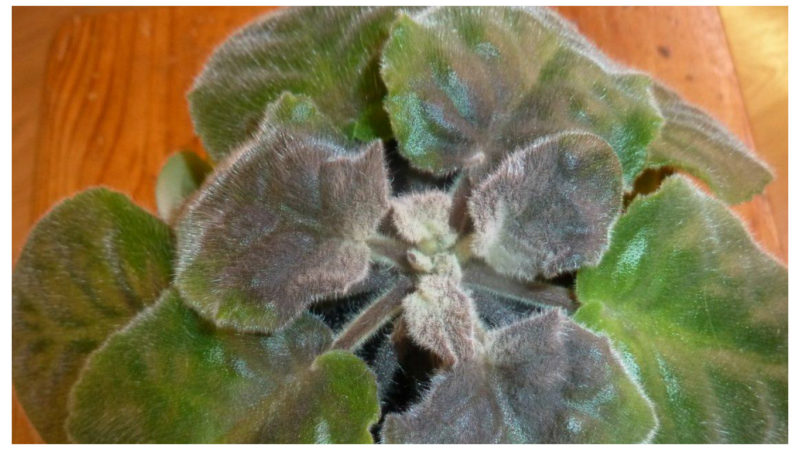
It appears brown spots on the leaves. It develops due to strong soil and air humidity. To save the remaining violets on the windowsill, the affected plants must be thrown out together with the soil, and the pot should be thoroughly washed and sterilized.
Thrips.

They are insects that live on the back of the leaf. If you notice them in time, you can remove the affected leaves and save the violet. If infection is suspected, the flower should be isolated from the rest until complete recovery.
The reasons why the violet leaves turn yellow
The yellowed leaves of a room violet are the first sign of improper care. It is impossible to ignore this moment, since subsequently the plant will inevitably die.
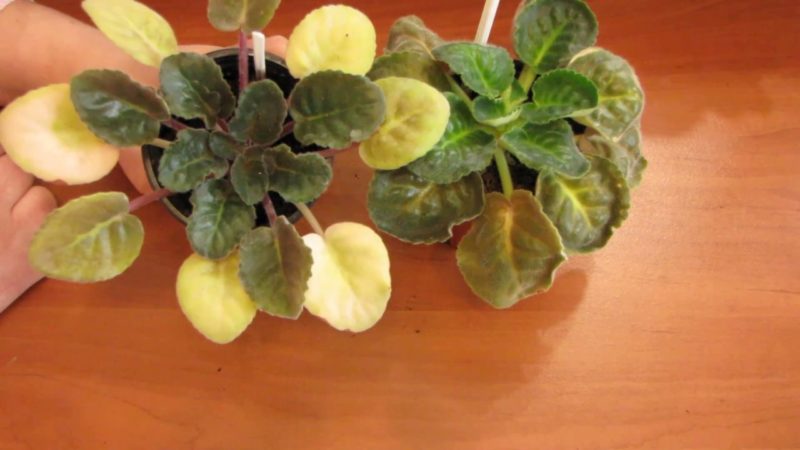
And this can happen for several reasons:
- little moisture;
- insufficient humidity;
- lack of transplant for more than 2 years;
- direct sunlight;
- contact with heaters;
- lack (excess) of fertilizer.
In addition, sometimes the buyer initially chooses a diseased, withered plant, the withering of which is only a matter of time. One should also not exclude the old age of violets, as this is absolutely inevitable.
Senpolis are able to decorate any home, but in return require careful care. Therefore, the maintenance of the house of violets is suitable for those people who have enough time or plant growing is their hobby.












